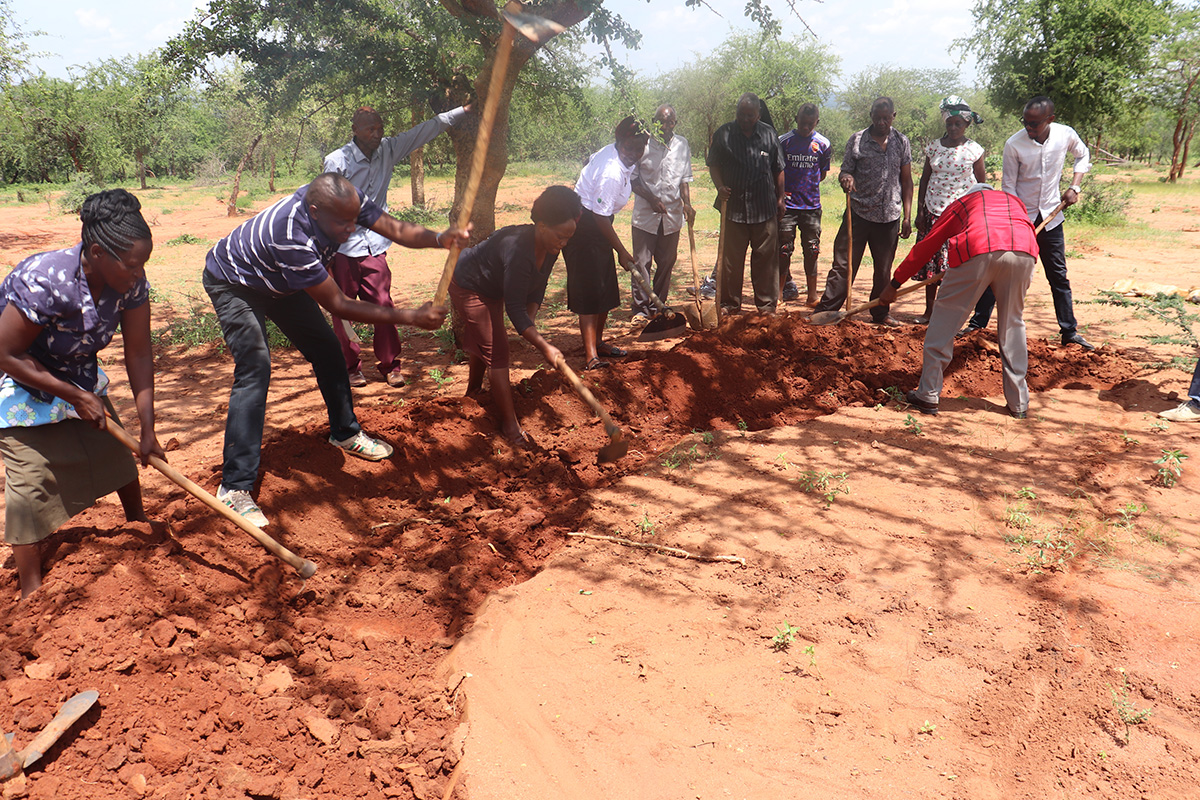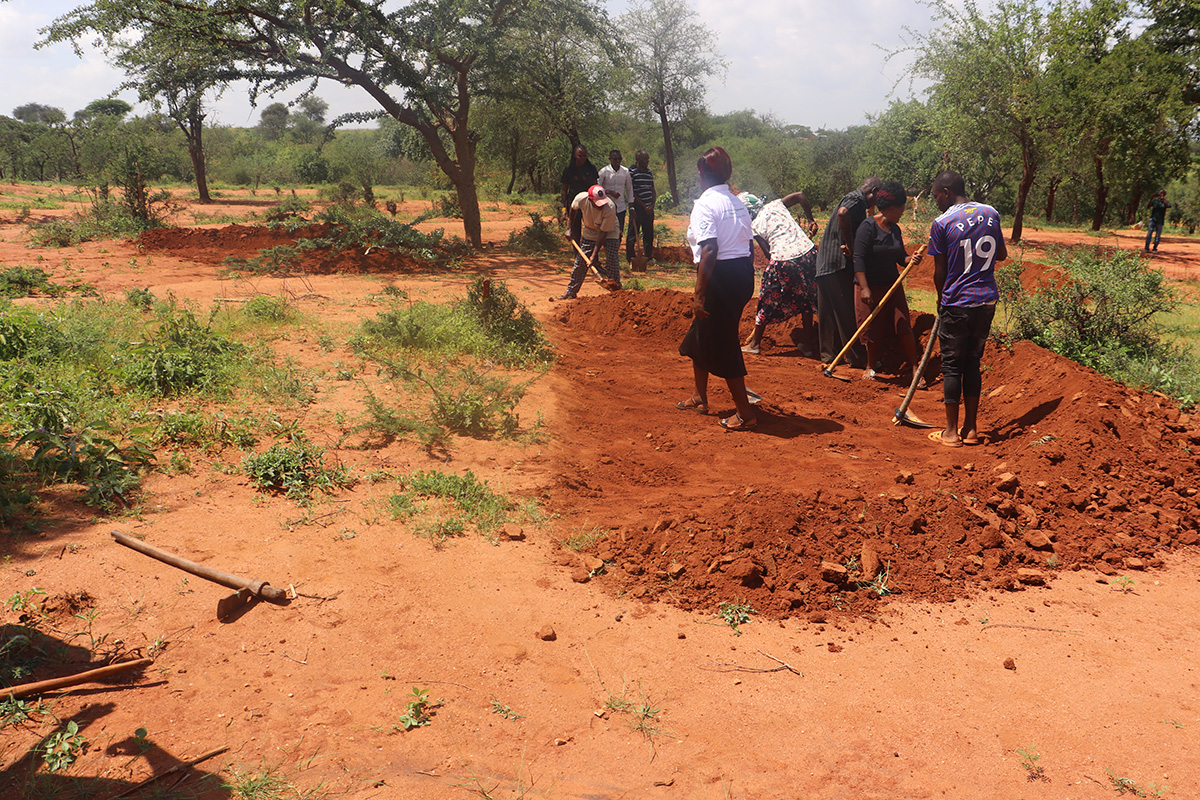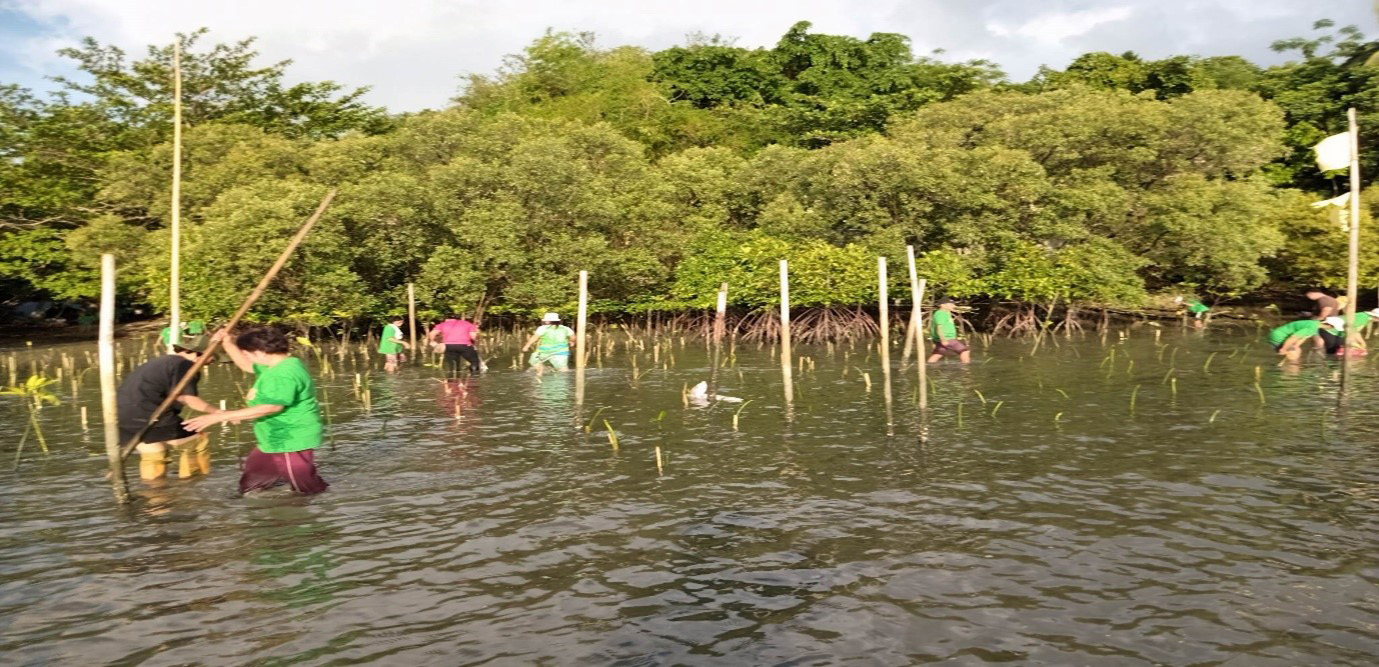AID’s Partners Take Seriously the Fifth Mark of Mission
Kenyan farmers working together to prepare degraded lands for making soil bunds*. Filipinos installing solar power for their lighting and water pumps. Solomon Islanders using rain gauges and recording rainfall patterns.
When AID partners from across the world came together in July 2024, environmental initiatives were a big part of the discussion.
The conference was online. It started with a guest speaker, Torres Strait Islander Anglican, Aunty Dr Rose Elu, speaking about Indigenous people’s advocacy to raise the alarm about coastal erosion in Australia’s Torres Strait Islands.
Coastal erosion is a theme that several of AID’s partners are familiar with. As rising seas erode coastal gardens and even burial sites, ECARE and VIMROD in the Philippines are planting mangroves in calmer waters. ACOM in the Solomon Islands is building a sea wall along a rougher coastal area.
Two partners, ADSE and ECARE, have started carbon financing schemes where they receive funding from other sources for the number of trees they protect or plant. They use a special formula, based on tree height and circumference, to calculate the amount of carbon sequestered. Other AID partners were interested to hear about this alternative source of income and its positive environmental impacts.
Some environmental initiatives are related more to sustainability and recycling local resources than to climate. Partners in Myanmar, the Solomon Islands, Kenya and the Philippines all promote organic farming. Farmers learn to make organic fertilisers, pesticides and stock feeds using scraps from fruit, vegetables, rice husks and other organic matter.
Care for Creation (our 5th Mark of Mission) is also promoted through teamwork within communities and between communities. Partners are establishing tree nurseries, seed banks and model farms and using these to exchange seedlings, seeds and learnings (like how to enrich soils and adapt to drought).
In a time of changing climate, drought resilience is important. Many of the seedlings and seeds – including root crops and collards – are chosen because of their resilience to drought. VIMROD during the conference told of a successful experiment where traditional rice remained productive during semi-drought conditions in the Visayas while nearby commercial rice fields were bare. ADSE’s farmer groups promoted water conservation techniques like zai pits (crops planted in small pits where moisture gathers), farm ponds (often connected to drip irrigation), soil bunds, shade cover, and mulching.
AID’s partners were able to exchange ideas and draw new energy from our partner conference. As follow up to the conference, one African partner explained, “We shall explore how to integrate issues of food security, Climate Change issues, and Building Resilience.”
Some of the ABM AID programs mentioned above – in Kenya and the Philippines – receive support from the Australian Government through the Australian NGO Cooperation Program (ANCP).
* Soil bunds are simple retaining walls along the boundary of agricultural fields. Constructing them permits rainwater to be retained in a field, which helps retain soil moisture for a longer time, reducing soil erosion during heavy rain and protecting fertile soil.

Demonstration of soil bund establishment in Makueni County, Kenya * © ADSE. Used with permission.

Bund supervisor inspecting a site in Manyanze, Kenya © ADSE. Used with permission.
